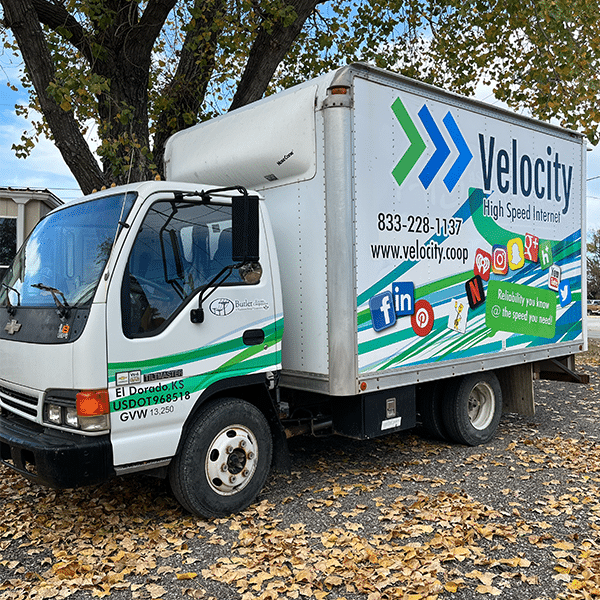Life comes at you fast when you’re a fixed wireless company providing services through the pandemic, and now looking at BEAD investment opportunities.
That’s the situation that Velocity, founded in 2018 and located in south central Kansas, finds itself in. The company is a subsidiary of the Butler Electric Cooperative and serves approximately 5,500 consumer customers.
In an interview with Telecompetitor, Velocity CEO Kevin Brownlee explained that Butler’s cooperative board sought to address the need from the lack of sufficient internet service in the area.
“The lack of sufficient internet in the area was close to the co-op’s core mission, which is to provide services that improve the quality of life for our members,” he said. “Our co-op board took the lack of availability as a call to action to provide reliable internet service to rural members and households in the area.”
Velocity’s fixed wireless service operates on more than one band of unlicensed spectrum, depending on the loading and density of each tower. However, the organization will be migrating to fiber in the coming months and years.
As a nonprofit, Brownlee explains that Velocity is trying to provide service as close to cost as possible. Velocity’s current fixed wireless pricing ranges from $49 (up to 15/3 Mbps) to $84 (up to 100/10 Mbps). These prices are “all-in” pricing and include equipment, managed Wi-Fi, and parental controls – all from Calix. Incumbent competitors to date, both wired and fixed wireless, have not reacted by investing in their own infrastructure to improve customer connectivity.
Future Proofing and Migrating to Fiber
Recently Velocity received a $10 million Kansas Capital Project Fund grant to provide high-speed fiber-to-the-home (FTTH) internet access to approximately 4,300 rural Kansans. The fiber build is in a signup phase as construction is underway and the first customers will begin to receive service in November. Brownlee says there has been significant interest and signups for fiber service ranging from $72 (up to 100 Mbps) to $124 (up to 2 Gbps).
Butler Electric’s grant application sought Kansas Capital Project Funds to provide fiber internet to their entire electric service territory but was only partially funded. Brownlee says that they will be pursuing Kansas BEAD dollars to supplement current fiber expansion and praises Kansas’ Director of Broadband, Jade Piros de Carvalho.
“We are actively pursuing other grant opportunities to bring this service to our entire membership,” said Brownlee. “Jade and her team are first class and have been allies, extremely helpful, and responsive to the needs of rural communities. Currently, she’s helping us understand how we might be able to expand and serve underserved rural homes leveraging BEAD dollars.”
With or without BEAD dollars, the Capital Project Fund area where the funded build surrounds incorporated municipal areas not eligible for grant dollars including Rose Hill and Eldorado. Velocity is relying on its own capital to reach these communities.
Brownlee explained Velocity’s pivot from being a fixed wireless provider to a fiber-to-the-home ISP as a pragmatic one, “There’s a lot of money that’s going to be bestowed on fiber projects, regardless of who’s in the White House. This will continue to be a significant domestic agenda for the next ten years.”
He also recognizes that wireless providers operating in the unlicensed spectrum will face challenges and potential overbuilding from competitors that receive government funding. Rules for the $42.5 billion BEAD program prevent funding from being used for fixed wireless operating in unlicensed spectrum bands.
“So, we’ve decided to get into the fiber business to better position us for the long term, strategically,” said Brownlee. “It’s not an indication of current service levels delivered by wireless and more about the fact that fiber is extremely robust and better positioned to meet bandwidth needs that will only grow over time. The speed at which the network will be able to operate will be life changing for our customers.”
Because Velocity is part of Butler Electric, they’re able to leverage the electric infrastructure already in place, attach to poles and lines, and run fiber at greatly reduced costs.
Forecasting out ten years, Brownlee said that he thinks Velocity will eventually be mostly a fiber network, but will still rely on a mixture of fiber and fixed wireless in areas within its footprint that are extremely difficult to reach.


